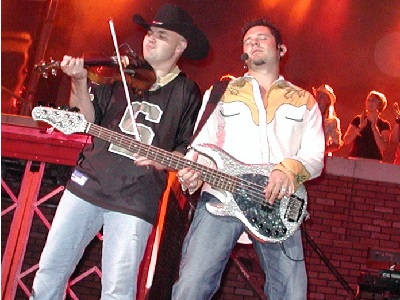Exercises to Help You Recognize Musical Notes
 The ability to discern notes and keys by ear is one of the most coveted abilities in music. Some musicians are born with the ability, while others struggle for years to learn it.
The ability to discern notes and keys by ear is one of the most coveted abilities in music. Some musicians are born with the ability, while others struggle for years to learn it.
Today we are going to go over some exercises that will not only help you to train your ear but perfect it as well.
Get Your Basic Theory Checked
First off, you need to understand the differences between the basic major and minor keys. Major keys are powerful, upbeat keys, and are used in most forms of pop and heavy metal.
Minor keys are frail, sad-sounding keys that are used in many forms of music such as the blues and jazz. Take your time and listen to the basic major and minor keys until you are able to easily differentiate one from the other.
Sing Your Notes Out
Once you are able to easily decipher the differences between key properties, the next ear training exercise for guitar players is all about singing. Don’t worry if you can’t single very well, as I myself cannot either, yet I still learned my notes. Play an open E.
When the note is ringing out, sing out its name and hold your note until you match the E’s pitch. Next play an F and repeat. Play all of your basic notes in a single octave and then repeat the exercise.
While you shouldn’t expect to sound very pleasant, you should still be able to reach each note within a basic given range. If you find yourself having trouble hitting a note, don’t skip over it; simply move up or down a single octave so that you can match it. Believe it or not, this exercise is actually helping you memorize every single note in every single octave.
How Does Singing Aid In Note Recognition?
An octave of A is still an A, which means the basic character traits of the note are still exactly the same, only higher or lower. This means that if you know an A3, you will know an A4 and an A2 because they are all the same exact note. Singing notes is the easiest way to train you ear, as the connection between your voice and the note leads to better recognition.
When you play a chord, sing the root note and match it. This will help you develop the skill of discerning chord properties. Take for instance a G Major chord, which consists of the notes G, B, D, and G. Singing out the G in the chord while playing it will better help you to recognize the chord property by ear, as you will be teaching your ear to look for the root quality of the chord.
Now that you know a few ear training exercises, the last step is completely up to you; practice. Set aside a bit of time each day to study notes and keys, and to sing your notes as well. This repetition will help your mind grab a hold of the notes, and make memorizing them much easier.
Put in the hard work, and you will achieve the results of having a better sense of music. Remember to have fun, and don’t give up, because a great ear isn’t far away.







Leave A Comment